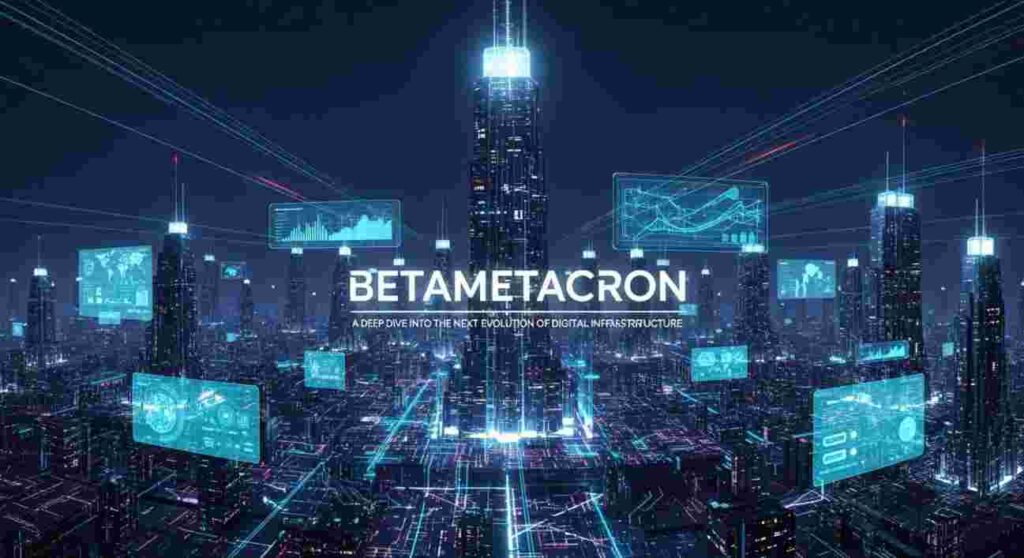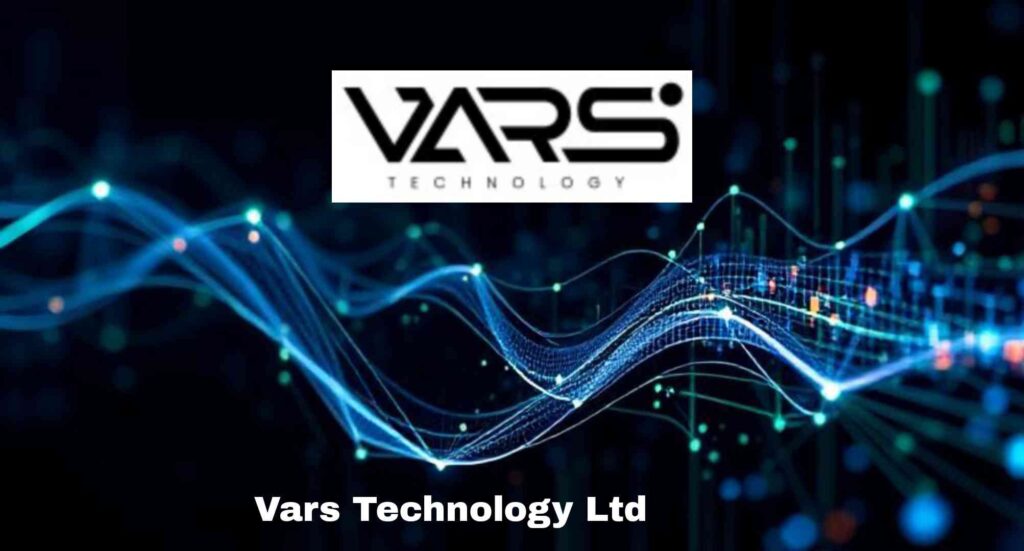In a world where technology evolves faster than most of us can keep up, one name has started gaining quiet traction in tech forums, enterprise circles, and early-stage VC portfolios: Betametacron. Not just a term, not just another buzzword—it’s a concept, a toolset, and potentially the cornerstone of a new digital age.
This article is not a fluffy overview. We’re going deep—pulling apart what Betametacron actually is, what problems it claims to solve, how it’s being applied across industries, and whether it’s just another vaporware pitch or something that genuinely demands attention. If you’re a CTO, startup founder, system architect, or just someone trying to stay ahead of the curve, this piece is written for you.
What Is Betametacron?
Despite its futuristic ring, Betametacron is less about sci-fi and more about infrastructure transformation. At its core, it’s a modular digital orchestration framework designed to connect decentralized environments, optimize computation workflows, and enable real-time adaptive scaling across both cloud and edge networks.
Let’s break that down:
-
Modular: You can use parts of Betametacron independently, or as a whole.
-
Digital orchestration: It manages, schedules, and optimizes various interconnected services—think Kubernetes, but smarter and more adaptable.
-
Decentralized compatibility: It’s built for environments where control isn’t centralized—IoT systems, blockchain networks, distributed AI clusters.
-
Real-time scaling: It adjusts processing loads dynamically, which is gold in latency-sensitive environments like real-time analytics, gaming, or autonomous robotics.
Betametacron is not a single product. It’s a layered ecosystem of SDKs, protocol standards, and platform services—much like TensorFlow isn’t “just” a machine learning library.
Why Betametacron Matters in 2025
To understand its relevance, we need to look at what’s failing in current infrastructure.
1. Traditional Orchestration Is Too Static
Kubernetes, Docker Swarm, and similar systems revolutionized software deployment. But they struggle with:
-
Non-homogenous nodes (e.g., IoT sensors vs. cloud CPUs)
-
Variable bandwidth environments
-
Multi-tenant security in fully distributed architectures
Betametacron is built to function fluidly in messy, mixed environments. It doesn’t assume consistency—it expects entropy.
2. Edge Computing Needs Smarter Load Distribution
In 2025, edge computing isn’t a niche—it’s a necessity. But most edge deployments rely on rigid configuration. Betametacron introduces context-aware load sharding, meaning it understands both the current node conditions and the nature of the task. Tasks get sent to the best available node in real time, without constant human intervention.
3. AI/ML Pipelines Demand Elastic, Reactive Infrastructures
Most AI pipelines break when moved from cloud dev to real-world edge use. Betametacron’s elastic micrograph scheduler adjusts inference execution dynamically based on latency, power, and bandwidth constraints—perfect for autonomous vehicles, drones, or wearables.
Key Features of Betametacron
Here’s a closer look at what sets Betametacron apart:
1. Hierarchical Context Mesh (HCM)
This is the backbone of Betametacron’s intelligence. It creates a real-time map of all nodes, services, tasks, and contextual parameters like:
-
Power usage
-
Latency
-
Bandwidth availability
-
Trust scores (in decentralized security contexts)
This mesh constantly evolves, allowing Betametacron to make decisions with a “situational awareness” unlike traditional schedulers.
2. Transaptive Deployment Protocol (TDP)
TDP is how Betametacron handles deployment. It’s transaptive—meaning it learns from previous deployments and adapts not only to changes in hardware, but in task behavior over time. The result? Faster deployments, fewer crashes, and smarter resource usage.
3. Causalogic Analytics Layer
This is an embedded analytics module that doesn’t just log data—it correlates causes and effects across the mesh. If a deployment fails, Betametacron can typically identify why in human-readable terms, not just error codes.
| Feature | Traditional Orchestration | Betametacron |
|---|---|---|
| Context Awareness | Low | High (via HCM) |
| Deployment Flexibility | Static | Adaptive |
| Edge Compatibility | Limited | Native |
| Predictive Analytics | External tools required | Built-in (Causalogic) |
| Multi-domain Support | Cloud-centric | Edge + Cloud + Hybrid |
Real-World Use Cases Emerging in 2025
Betametacron is not vaporware. Several early applications are already in production or advanced testing:
1. Smart City Grid Optimization (Lisbon, Portugal)
The city of Lisbon piloted Betametacron to manage their hybrid grid of sensors, EV charging stations, traffic control systems, and emergency services. Results showed:
-
37% faster incident response coordination
-
23% reduction in peak-hour congestion via adaptive signal routing
-
12% lower energy consumption in public lighting
2. Decentralized Finance (DeFi) Infrastructure
Two leading DeFi platforms integrated Betametacron to better handle fluctuating compute loads during volatile trading periods. Using HCM and TDP, the platforms stabilized latency issues during token surges.
3. AI Edge Deployment in Agriculture
An Indian agri-tech startup used Betametacron to deploy deep learning models to analyze crop health in remote regions. Thanks to the elastic micrograph scheduler, they achieved 93% uptime in areas with unstable 4G, without overloading local edge devices.
Betametacron vs Competitors
Here’s a quick comparison of Betametacron with leading alternatives:
| Technology | Kubernetes | HashiCorp Nomad | Betametacron |
|---|---|---|---|
| Edge Native | ❌ | ⚠️ Partial | ✅ Yes |
| Real-Time Scaling | ⚠️ Limited | ⚠️ Basic | ✅ Dynamic |
| Context Awareness | ❌ | ⚠️ Manual | ✅ Hierarchical Mesh |
| Built-In Analytics | ❌ | ⚠️ Integrations needed | ✅ Causalogic |
| Decentralized Trust Management | ❌ | ⚠️ External plugins | ✅ Built-in |
| Learning-Based Deployment | ❌ | ❌ | ✅ Transaptive |
Practical Tips for Integrating Betametacron
If you’re considering testing or adopting Betametacron, keep the following in mind:
-
Start with hybrid environments: Don’t go full edge. Use Betametacron to orchestrate across your cloud and a few edge nodes first.
-
Monitor the Causalogic insights: These aren’t vanity metrics. They often reveal deep inefficiencies you didn’t know existed.
-
Use SDK v3.2+: The 2025 SDK updates added compatibility with Rust, Go, and even some legacy Python stacks, making integration easier.
-
Join the community: The Betametacron Foundation’s GitHub and DevExchange are active hubs where real users share updates, configs, and deployment recipes.
The Bigger Picture: Betametacron and the Future of Distributed Intelligence
We’re entering a world where monolithic architectures are simply too slow, too fragile, and too dumb to meet modern demands. Whether it’s a network of autonomous machines, decentralized financial systems, or smart infrastructure spanning continents—fluid, intelligent orchestration is no longer optional.
Betametacron, while still maturing, represents a blueprint for how the next generation of software infrastructure might function: aware, reactive, adaptable, and distributed.
The companies that master this shift early will gain not just technical efficiency but strategic superiority—more uptime, smarter deployments, and faster responses in a world where milliseconds matter.
Frequently Asked Questions (FAQ)
Q1: Is Betametacron open-source?
Yes and no. The core protocol specs are open-source under the Betametacron Foundation. However, the enterprise orchestration tools and some SDKs are licensed under commercial terms.
Q2: What kind of hardware is required?
Betametacron is hardware-agnostic but performs best on devices that support basic telemetry feedback (CPU load, network stats). It runs on anything from Raspberry Pis to enterprise-grade servers.
Q3: Can I use Betametacron alongside Kubernetes?
Absolutely. In fact, many deployments use Betametacron to orchestrate across multiple Kubernetes clusters or to enhance legacy orchestrators.
Q4: Is this suitable for startups, or just large enterprises?
Startups actually benefit the most—it eliminates the need to build custom orchestration solutions from scratch. Several Y Combinator-backed companies have already adopted it.
Q5: Where can I learn more?
Check the official Betametacron DevExchange and GitHub repos. There’s also a growing number of walkthroughs and live AMAs hosted by contributors on X (formerly Twitter).
Q6: Is there a certification path for engineers?
Yes. In 2025, the Betametacron Foundation launched a 3-tier certification path for DevOps engineers, cloud architects, and edge developers.
Final Thoughts
Betametacron isn’t a magic bullet, but it might just be the missing piece for a truly intelligent and fluid digital infrastructure. Its context-aware mesh, transaptive deployment engine, and built-in causal analytics don’t just represent technological innovation—they reflect a philosophical shift in how we think about software orchestration in a decentralized world.
If your organization deals with complexity—distributed systems, unreliable environments, or variable demand—Betametacron deserves a place on your radar in 2025.
It’s not just what comes after Kubernetes. It’s what comes next, period.



